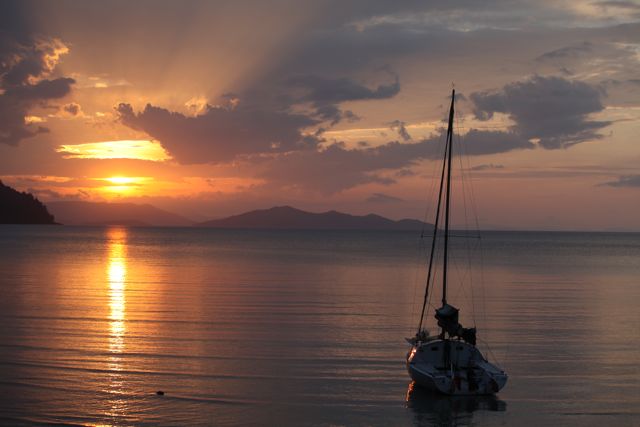
– Emily Dickinson.
The other day I was walking Willow, our French Bulldog, in the nearby macadamia forest, strolling along by the creek, thinking of nothing in particular, when I noticed there was a slight breeze wafting through the bushes – all the leaves were quivering and, it seemed, waving to me. I’ve often thought that a sudden breeze seems to indicate a passed beloved is near me, and as I tuned into the feeling of the breeze, I felt I was immediately surrounded by loved ones – humans and animals.
In the past few years, I’ve lost a lot of family, friends and four-legged friends, as I know many of us have done during these difficult times. Sometimes it’s a pain that’s hard to bear, but on this morning, I was suddenly filled with a huge surge of gratitude that I had experienced all of this love from all these different beings.
I could feel my heart expand with joy until it was almost dancing in my chest – and as I stood still, taking in this wonderful, light-hearted moment, I noticed that at my feet was a small white feather. My mother had always told me that a white feather meant love, pure and simple, and as I stooped to pick it up, I was glad to receive this sweet message from her. She had left the planet decades before, too young and in pain from her alcohol addiction, and although I do sometimes feel her presence, as time’s gone by she’s not around quite as much as she once was. I held the feather in my hand and acknowledged all the unseen ones, and walked on, feeling remarkably at peace.
Willow, who lives her best life 99% of the time, was having a great walk, ducking in and out of the woods, checking in with me, bouncing along in her usual happy way, and for a while I concentrated on just being where I was, on a walk, in the woods, with the dog, but after about ten minutes I started thinking about my mother again, and much she’d loved her older brother, my uncle, and how he and I had often had conversations about how loving she was, and how I’d told him, after she passed, about her belief that white feathers were always a message of love – and guess what? Just as I had this thought, there was another white feather, a larger one, just by my feet. I smiled and picked it up as well, and on we went, and I finished the walk very conscious of this light-hearted feeling of joy, which quite honestly does not come calling quite as often as it could, does it?
But then…just as Willow and I came up the last small hill back towards the car which was parked on a track where the adjoining farm and the macadamia forest meet, I saw in a split second, that a farmer had arrived at the furthest fence, with his chain saw, and was cutting up a fallen tree – and that his dog, had left him, traversed the field, and was right by my car.
Adrenalin surged through my body. After almost a lifetime of country living I was not about to walk Willow the 500 metres to my car, in direct sight of a large dog I didn’t know. Call it being over-careful, but I’ve had a dog chased into a lake by wild dogs, a dog attacked twice by a neighbour’s dog and almost killed, and I wasn’t about to risk even the tiniest encounter. She was about to head for the car, and hadn’t seen the dog, and I quickly called her, clipped her lead on, went back down the hill, and out of sight. Just to the left of me there was a steep, small path that I’d followed on occasions, and I knew it would take me back down to the creek, up a hill, and I would be able to see, from the safety of the trees, where the dog was. I didn’t care how long it took. I was going to wait until the coast was clear enough for us to get back without a confrontation – particularly since Willow seems to think she’s a Very Large Dog disguised as a small one. We stood together at the edge of the wood and waited for about 15 minutes until the dog lost interest in my car, and started back towards his owner, before he or she stopped about halfway across the paddock and started sniffing around. I decided it was far enough away for us to make our way back, and so we headed off, walking way up past the car into the rows of macadamias, and then down through the macadamias, using the car to keep me hidden.
We executed our manoeuvre perfectly, slinking through the shadows of the trees until we were in line with the car, and walking quietly down towards it. We were within 10 metres of it, when the black dog lifted its head and looked towards us, and quicker than you could say ‘knife’, we ran the last few metres. I flung the backdoor on my side open, Willow hopped in, I raced around to the front of the car, just as the black dog was aiming straight for me, its hackles raised and barking like crazy, and I literally just had time to jump in and slam the door, and it leapt for the car door, its teeth bared.
I sat in the car, turned it on, took a deep breath, while Willow threw herself against the window in an attempt to ward off this sudden intruder, and drove off, the dog following us. I had time enough to see that it was actually quite elderly, with a grey muzzle, and at the same time that it was in semi-attack mode, it was also wagging its tail, and was probably not quite as threatening as it had seemed when it was racing towards me full tilt. But still, I thought, way better safe than sorry.
As we got further away, it dropped off, and headed back towards the farmer, and we got back on the road towards home.
I was a bit mystified – why on earth, I wondered, had I had this wonderful, deeply joyous, spiritual experience which had completely uplifted me from the mundane everyday world, only to then be thrown back into a situation in which adrenalin and cortisol were pumping through me, and I was having to think quickly about the best way to proceed in a circumstance which might well have been ok, but could also have been downright dangerous? It didn’t seem quite fair really. Not on a quiet Saturday morning when you’re out for a walk with the dog.
But then it hit me, that I was just being shown the duality of life in a very clear, almost bizarre fashion – a white feather, a black dog. Heaven and earth. Peace, joy and love, and the daily grind of being human. I wondered what the lesson was, and it occurred to me that for me it meant, or means, that the quicker you can drop into one state or the other, and let go of the feelings of the moment, the more balanced and light you become, whether it’s a moment of joy or a moment of fear.
I could put the dog moment down and move straight back into the connection I’d felt with the spirit world, and take that feeling back into my everyday life, and that is what I did. I took a few deep breaths, congratulated myself on being careful and looking after Willow, and let it go. I thanked the breeze, the beautiful day, and all my beloveds, and went home to make a cup of tea and ponder the strange twist and turns of life.
My latest book, A Time for Alchemy, how to turn your passion into purpose, is available on Kindle and Amazon as an e-book on https://www.amazon.com/Time-Alchemy-Transform-Passion

 Scene – at my local Telstra shop.
Scene – at my local Telstra shop.
























